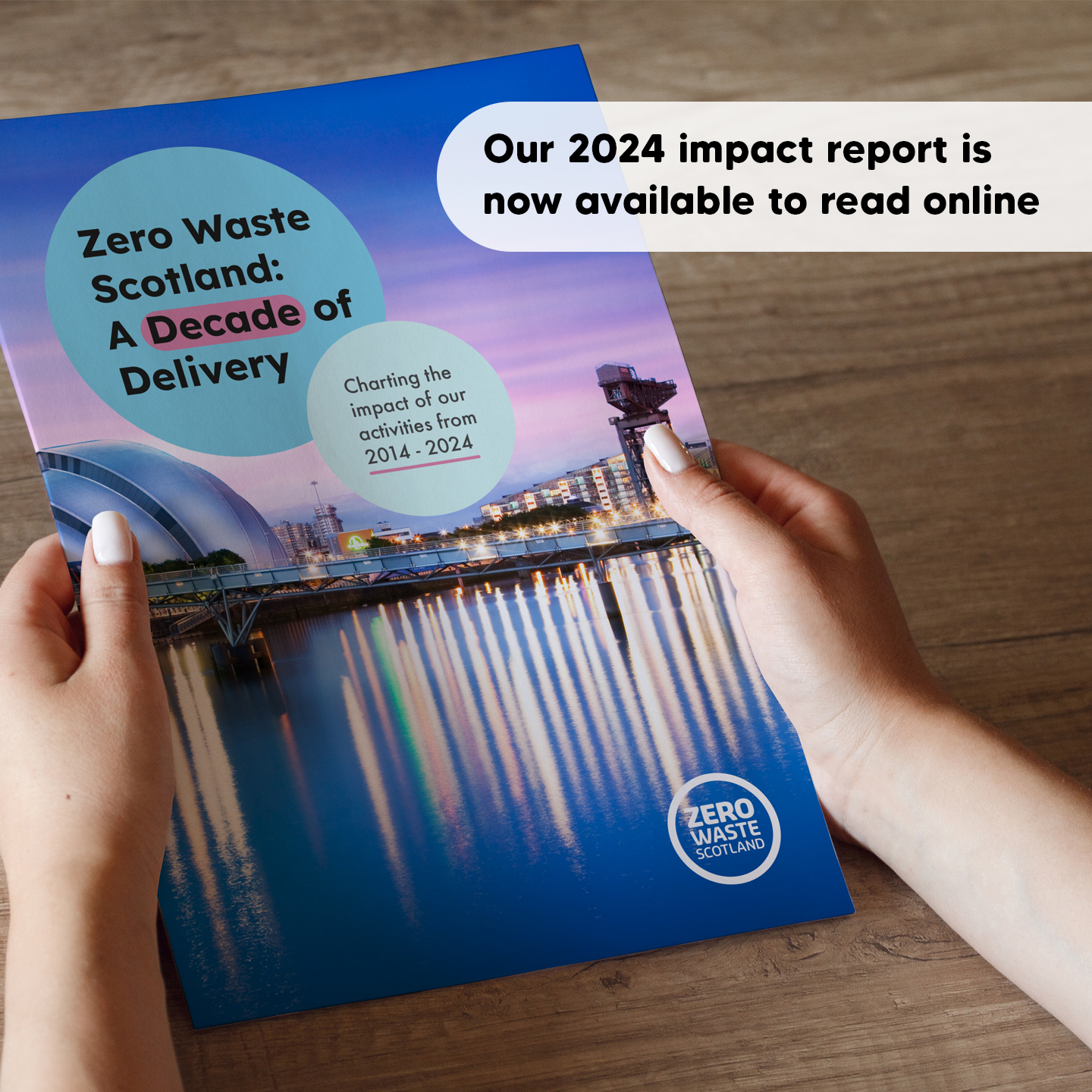
Reducing Construction Waste
The construction sector is the largest consumer of natural resources and the largest contributor to waste in Scotland, accounting for at least 50% of our overall waste.
Why the construction sector needs to adopt circular economy principles.
The ethos of a circular economy is to “make things last”, eliminating waste.
The built environment is a key player when it comes to moving away from the linear model of “make, use dispose” to a sustainable and circular model.
Current building infrastructure wasn’t designed with the circular economy in mind and was rarely constructed so that at the end of life they can be dismantled and re-used. A circular approach to construction is all about building with the future in mind.
Fundamental to the success of the circular economy in Scotland is how modern buildings and modern materials can be designed to be better used, last longer and be able to be used for other purposes at the end of their life cycle.
Circular construction starts with designing out waste so that:
- materials specified and used (natural or technical) can have a future purpose beyond the life of the building;
- buildings can be easily adapted for different future uses without generating waste;
- building can be easily maintained and repaired without generating waste;
- buildings can be easily deconstructed easily so materials can be reused.
Tools and techniques which can be used at the design stage are:
- Using Building Information Modelling (BIM) as a technique to design, plan and manage construction projects as it allows 3D models of the clients’ vision to be created;
- Whole life costing is an approach which can be helpful at the design stage as it allows the whole life cost of a new build or refurbishment project to be measured and the impact of different design choices can be tested;
- Sharing/Leasing/Hiring – allow flexibility within the design to acquire unconventional items if necessary and to allow for the potential for material exchange. There are also some businesses now leasing construction materials such as steel frames;
- Servicing and repair – extending the lifetime of buildings by maintaining and repairing them, so they remain in their original use for as long as possible. Did you know that the lifetime cost of a building can exceed initial capital layout five times over?
- Remanufacture and re-use – extending the lifetime of buildings at the end of their ‘first life’ by repurposing them or enabling other, subsequent uses. E.g. transforming a commercial building into disparate domestic dwellings. This is also about prioritising the sourcing of re-used materials. The increasing use of materials passports to document all the components of a building helps in encouraging re-use and recycling;
- Recycling – separating products into component parts and materials, and enabling those to be reutilised in new products, displacing the use of virgin raw materials. At the design stage, it’s about design specifying the use of recycled materials wherever possible.

Procuring resource efficient construction projects
Procurement professionals can play a key role in helping to maximise waste reduction and recovery in construction. Our guidance for procuring resource efficient construction projects is written to assist with all phases of a build from initial design to construction through to renovation and demolition.
Tools and resources
We have a number of guides, tools and resources. From a waste prevention perspective we recommend you:
- Undertake a site waste management plan to keep track of your raw materials and waste, save money and help meet your legal obligations;
- Read our guidance on how to improve waste management on construction sites, written for on-site staff and supervisors, who can influence effective waste management by following Best Practice.
Some benefits of Best Practice include; income generation through collection of materials for re-use, reduced costs through purchasing less material and maximising skip space, less accidents on-site through correct materials storage and regulatory compliance with Duty of Care requirements.






